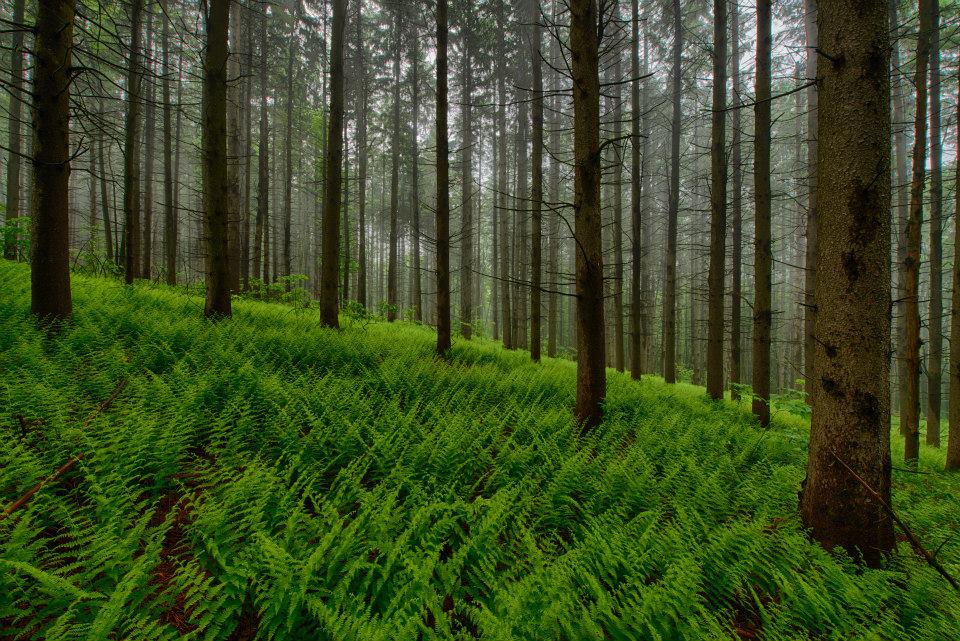Once upon a time there was a farmer who had lost a foal, and so he went out on Midsummer’s Eve to search for it. He chanced to pass through a cluster of ferns, and some of the fern seed fell into his shoes. He found his missing animal, and went joyfully home, but when he walked in the door, neither his wife nor his children looked at him or paid any heed to him. When he said “I have found the foal!” they screamed and ran from the room in fear.
At first the famer was bewildered. Then he remembered walking through the ferns, and realized what had happened. He took off his shoes and emptied them of fern seed, and his family returned, for now he was no longer invisible.
Folk tales from many sources, impossible to date, all agree that fern seed is powerful stuff. Shakespeare referred to fern seeds’ magical abilities four hundred years ago, but the legend is certainly much older than that. Fern seed can bring you luck, or cause your horse to cast a shoe, or help you converse with birds.
Fern seed. I’ll bet you’ve never seen any. That’s because fern seed is invisible, and so you need to be careful when walking through ferns lest you get some in your shoes. Of course, its magical powers will also help you find lost things, turn lead to silver, detect buried treasure, and generally protect you against spells, especially on Midsummer’s Eve.
Many thanks to Wells Horton for this lovely photo. http://wells-horton.smugmug.com/
The other reason you might not notice fern seed is that it doesn’t exist. It’s like hen’s teeth, or a wild goose chase. Ferns evolved millions of years before seed-bearing plants like grasses and wildflowers, and ferns reproduce by means of spores. These dust-like specks are so tiny as to be almost invisible. Although an individual fern plant can produce millions, even billions of spores, they can be hard to find. They’re carried on the fern plant in some very odd places.
The spores of maidenhair ferns are tenderly held in the very tips of the leaves, folded over a fraction of an inch. Lady ferns, wood ferns, and several other species have dark clusters of spores, called sori, in patterns on the back of some (but not all) of the leaves. Sensitive fern has its spores on a stiff brown frond that is apparently unrelated to the green part of the fern–they’re connected by underground roots, but for many centuries botanists assumed they were two completely different species. Ostrich fern also has two different types of fronds, one green, one brown and withered-looking, holding the spores. Christmas fern has a sprinkling of spores on the backs of some of the topmost leaflets, or pinnae.
It’s easy to see why the ancients didn’t think of spores as the reproductive part of the plant. They’re withered, dusty brown clusters that look ominous, as though the fern has an insect infestation, or a really unpleasant and possibly contagious disease. But the brown powdery stuff is just spores–a sign the fern is healthily reproducing.
So when you go walking through the woods, wander through the ferns and look for the hidden spores. Just watch where you step, and shake your shoes out when you get home. Just in case.





Recent Comments